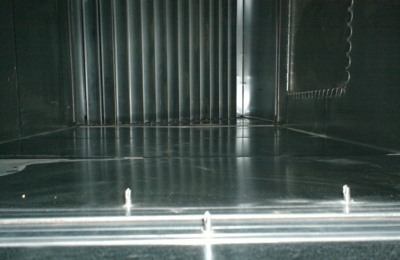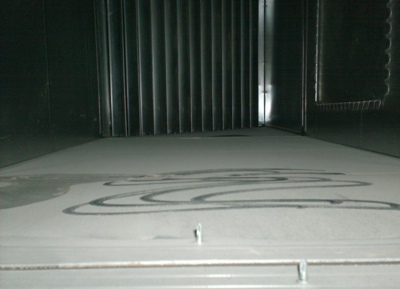System Hygienics has completed a ventilation ductwork cleaning project at Gartnavel General Hospital and the Western Infirmary, both in Glasgow, Scotland.
The contract, for NHS Greater Glasgow and Clyde health board, involved thoroughly cleaning the ductwork that supplies fresh air to 18 operating theatres – 12 at the Gartnaval Hospital and six at the Western Infirmary – as well as cleaning around 20 toilet extract systems in the two hospitals.
By scheduling work mainly at weekends, System Hygienics was able to minimise disruption during the project, which was completed over a six-week period.
Colin Mason, Regional Sales Manager of System Hygienics, said: 'We were working on critical operating theatre ventilation systems and could, of course, only do this delicate work while the theatres weren’t in use. That meant phasing the work over several weekends.
'We needed to programme the job carefully to ensure we had access to all areas at the times that were most convenient to the client and this involved considerable consultation with the hospitals’ estates managers.'
The team cleaned and disinfected the ductwork using System Hygienics’ Jetvent powervac system, a remote cleaning method that employs compressed air and a powerful filtered vacuum to access and clean areas that would normally be out of reach.
By using the Jetvent, the company’s engineers were able to reach up to 50 metres of ductwork from a single point, using existing maintenance and inspection openings. Once the work was completed, they took microbiological samples to confirm that the ductwork met current stringent standards.

Ventilation ductwork after cleaning
The engineers also tested the fire dampers in the ventilation system to ensure compliance with the Regulatory Reform (Fire Safety) Order 2005 and the BS9999:2008 Annex W.1, which covers routine inspection and maintenance of ventilation ductwork and states that, depending on the type and style of dampers, they should be checked at a maximum interval of 12 months for spring operated fire dampers and two years for other types.
Post-cleaning reports containing before and after photographs, certificates of analysis from microbiological samples and a certificate of cleanliness were then produced to confirm that the systems had been cleaned in accordance with B&ES TR/19 standards and to meet the requirements of the Department of Health’s Health Technical Memorandum (HTM) 03-01 – ‘Specialised Ventilation in Healthcare Premises’, which gives guidance on the legal requirements, design implications, maintenance and operation of specialised ventilation in healthcare premises.

Ventilation ductwork before cleaning
